images of 3d pencil drawings trees
15 Ways to Draw the Illusion of Depth
Updated: 21 Feb 2022

When drawing in a realistic style, it is helpful to depict from directly observation, or past using reference images.
However, for an initial sketch, or when drawing from imagination, there are several proven methods to create the illusion of depth.
ane. Volume
Different flat objects, 3D objects appear to have book, and therefore point depth.
A 3-dimensional object has highlighted and shadow areas, depending on the location of the light source.
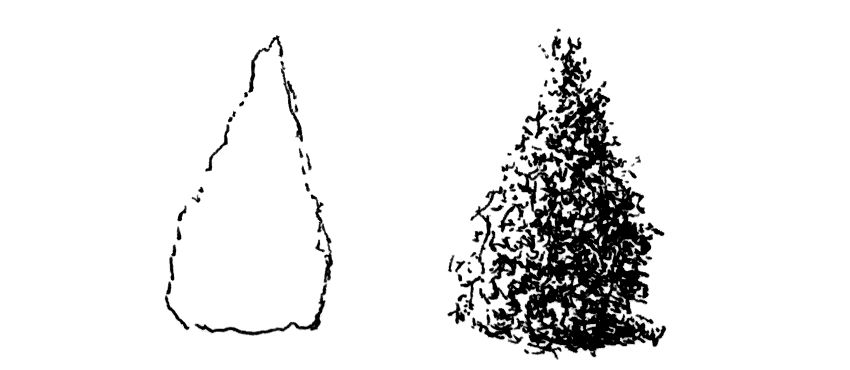 Apartment vs 3D object with volume
Apartment vs 3D object with volume
Instance:
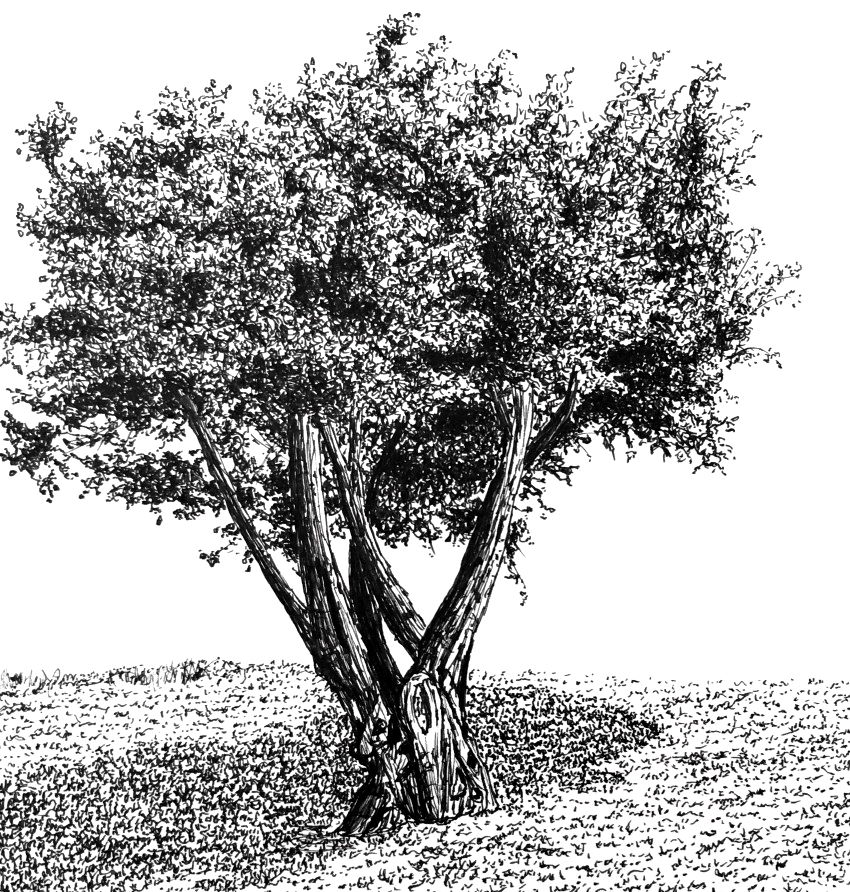 Pen and ink olive tree
Pen and ink olive tree
2. Size
According to the rules of perspective, the further an object is, the smaller information technology looks.
For that reason, when you draw similar objects in different sizes, the observer can conclude that smaller objects are further away, thus create a sense of depth.
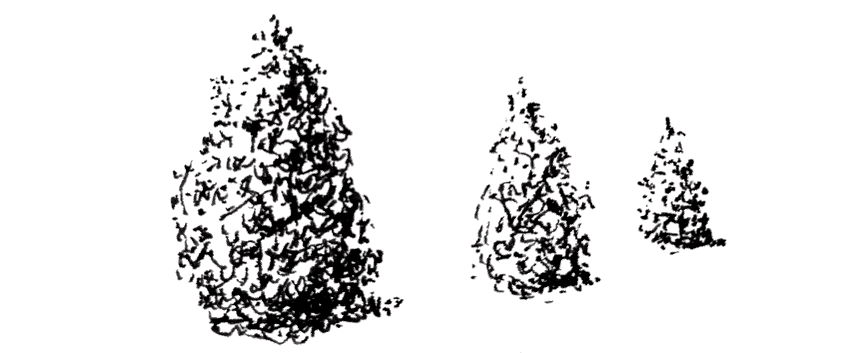 Objects with different size
Objects with different size
Instance:
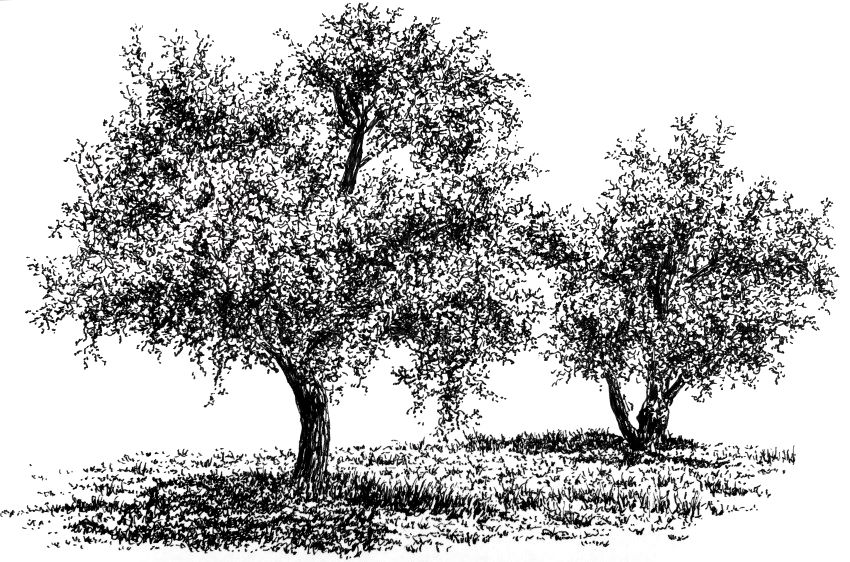 Pen and ink olive trees
Pen and ink olive trees
In addition, you lot can utilise size to create a sense of infinite.
Adding a modest object to a divers space, makes information technology look big:
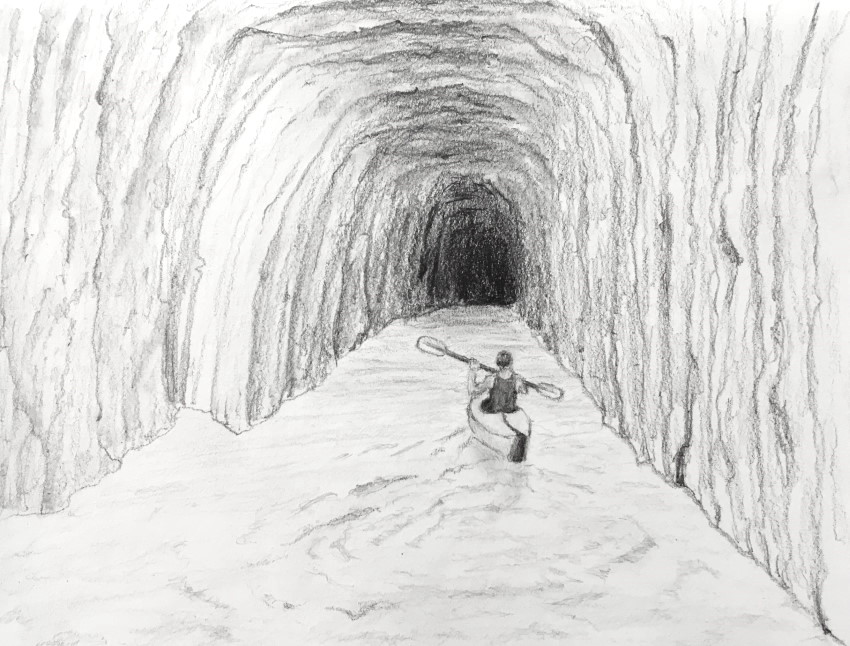 Small object defines large space
Small object defines large space
Adding a big object to the same space, makes it wait pocket-size:
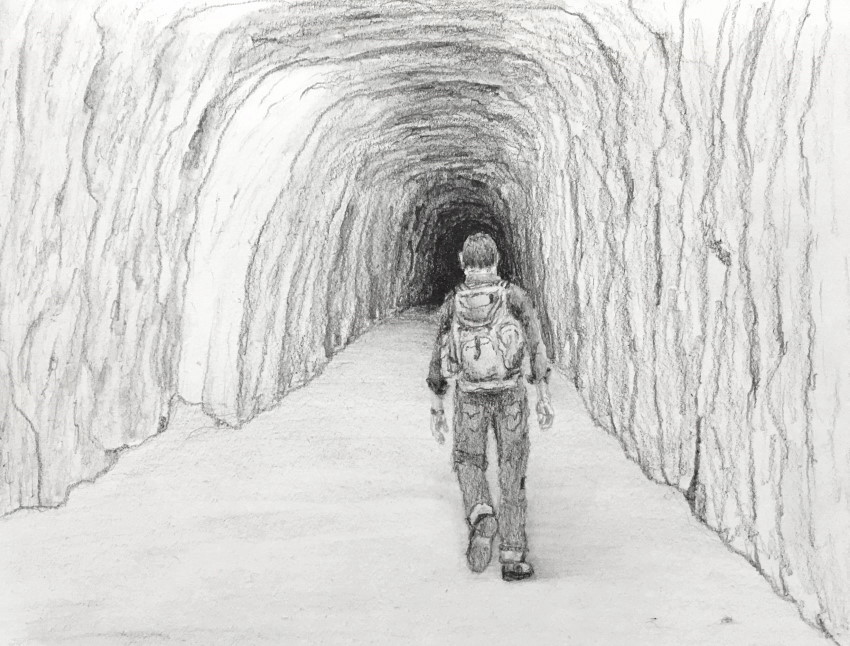 Large object defines small-scale space
Large object defines small-scale space
three. Overlapping
A torso concealing part of another body indicates that the trunk it is hiding is farther away.
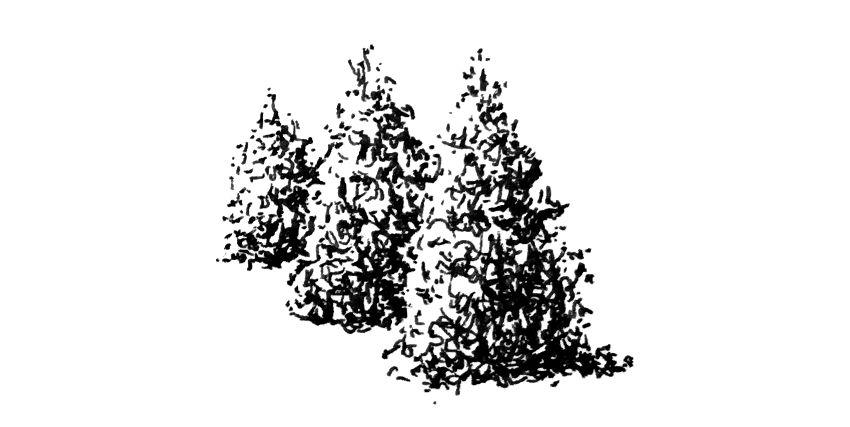 Overlapping objects
Overlapping objects
Overlapping is a powerful method to add together depth!
Instance:
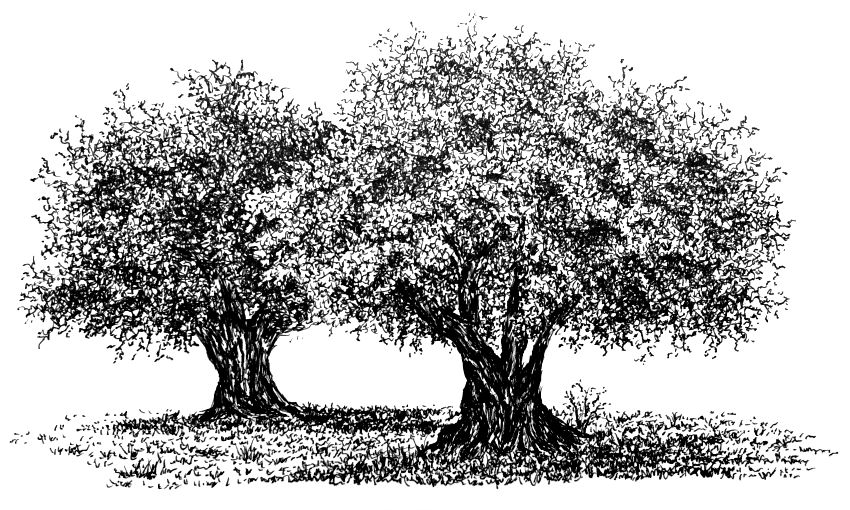 Overlapping olive copse
Overlapping olive copse
If you lot like my tree drawings, you are welcome to visit my guide on how to describe Whatever tree with a pen.
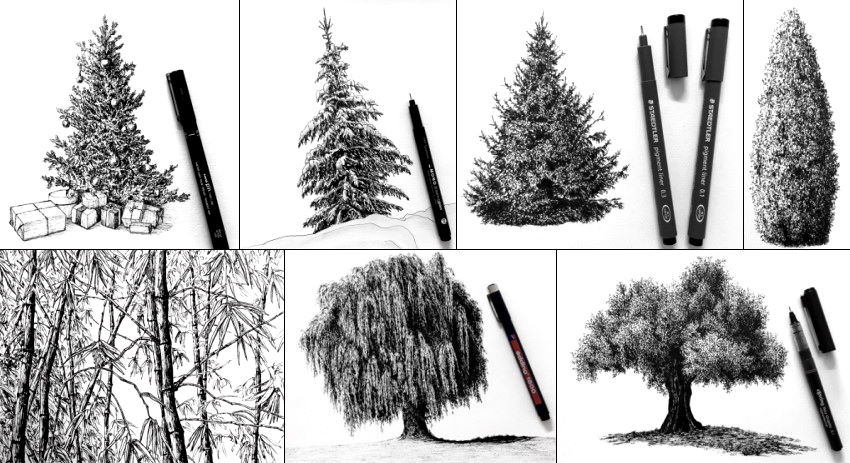
iv. Position/Acme
When the base of objects is positioned college on the drawing surface, they look farther away.
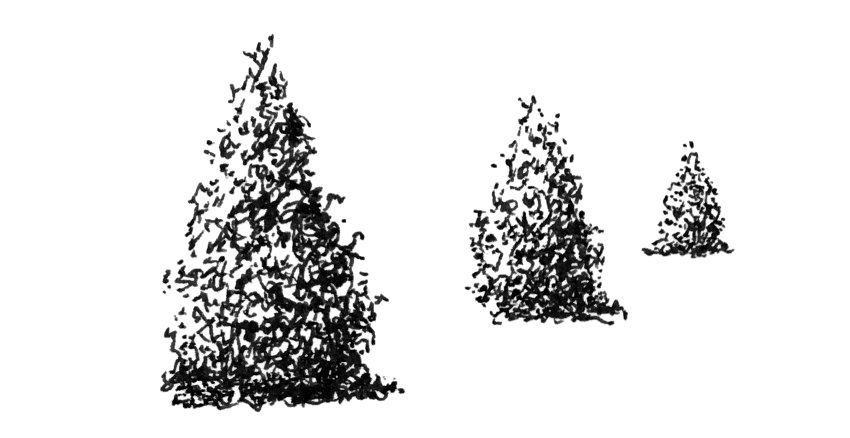 Different positioning
Different positioning
In most cases, the base of closer objects is lower on the cartoon surface, AND the top part of close objects is higher than far objects.
Notation:
This happens when the horizon is placed in the middle (more on that after).
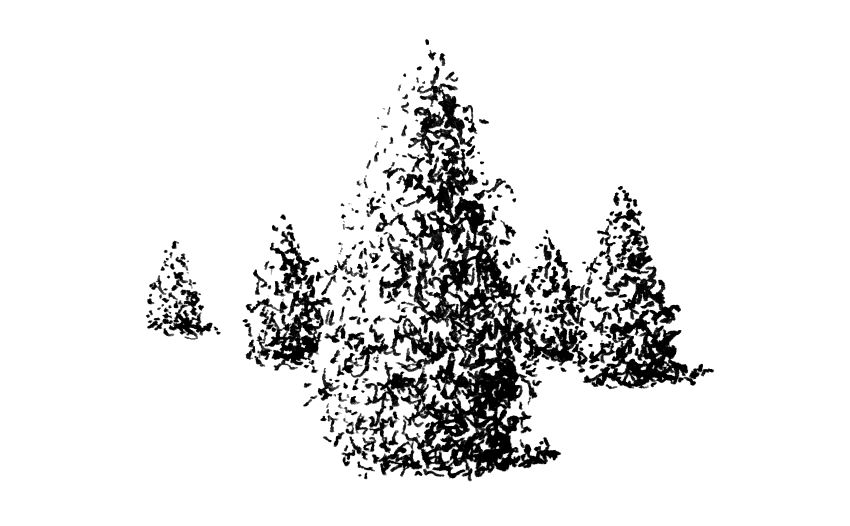 Closer object position & meridian
Closer object position & meridian
The reason is the observer'southward visual bending, meaning not measuring in meters but in degrees, in perspective.
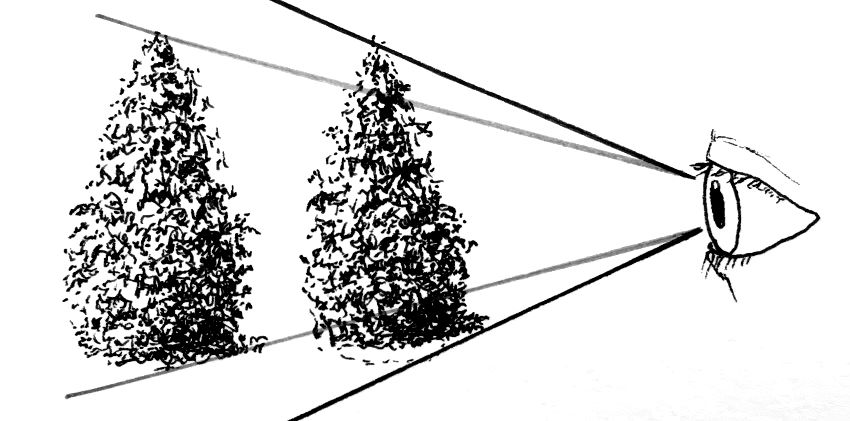 Observer angle of sight
Observer angle of sight
Retrieve:
There is no actual depth in a drawing; the paper sail is flat. Therefore, use height to determine the illusion of depth.
Example:
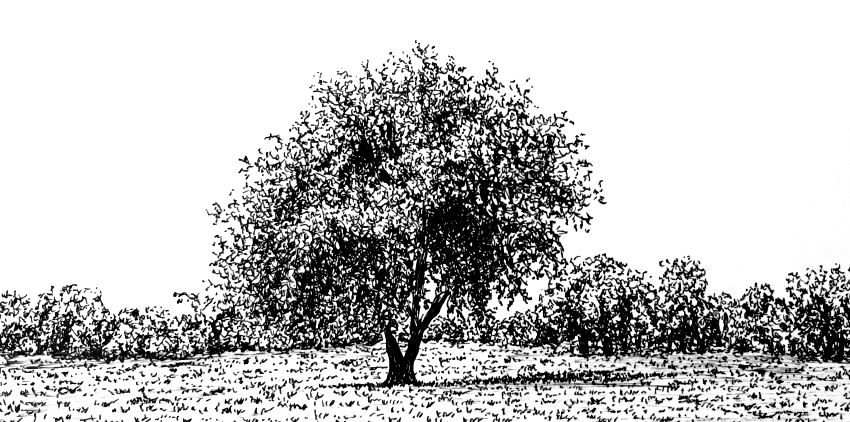 Tree position
Tree position
When looking from above, the pinnacle function of closer objects is lower on the drawing surface.
 View from to a higher place
View from to a higher place
Here is my review of recommended technical pens for cartoon.
5. Contrast & Details
The dissimilarity betwixt the dark and lite areas decreases, every bit does the amount of details, as an object is farther away.
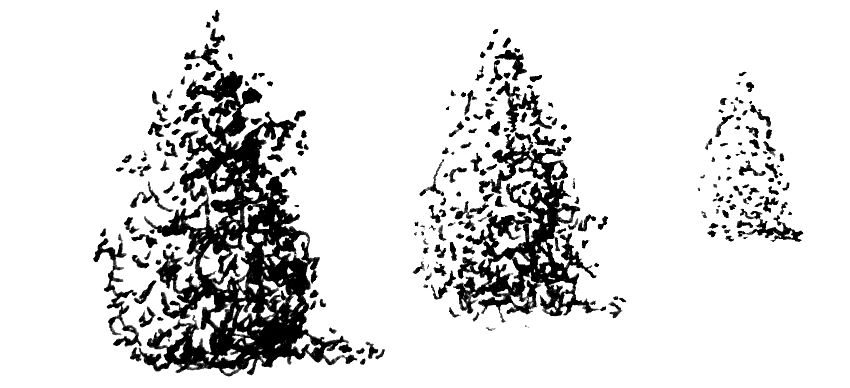 Decreasing levels of dissimilarity & details
Decreasing levels of dissimilarity & details
That is to say, when drawing or painting, areas with high contrast come forward, and areas with less contrast recede.
Example:
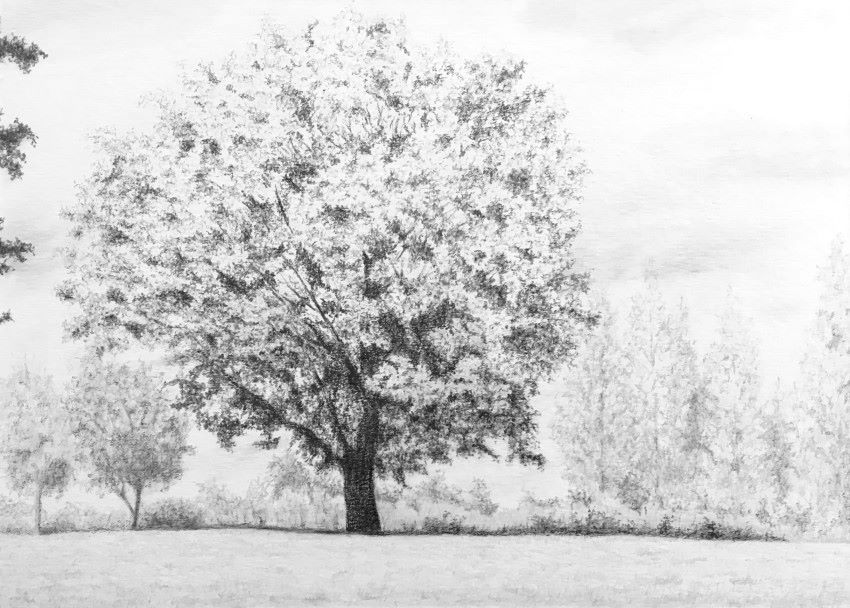 Trees pencil drawing
Trees pencil drawing
6. Edges
When an object or surface ends in a sharp fashion, information technology means information technology has a hard border.
Soft edges are when objects end in a gradual manner, from dark to calorie-free.
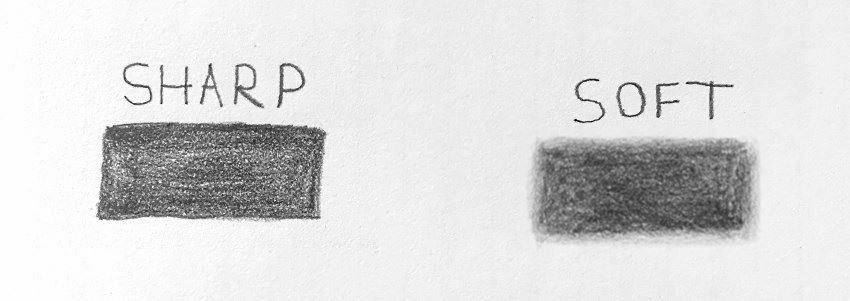 Hard/sharp vs soft edges
Hard/sharp vs soft edges
Foreground objects accept hard edges, and therefore in focus.
Background objects take soft edges, and therefore blurry.
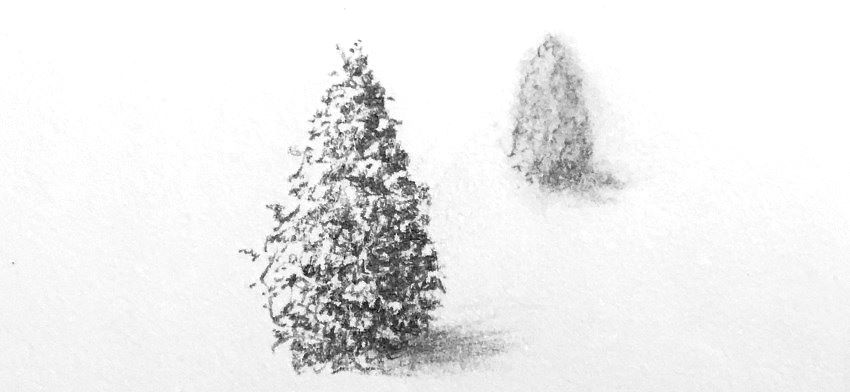 Background objects have soft edges
Background objects have soft edges
This happens due to atmospheric perspective.
Significant, with distance, there are more than temper (air) particles between the observer and the object.
These particles besprinkle lite. That is why distant objects wait blurry, and with fewer details and contrast.
vii. Horizon
Dividing your cartoon into basis and heaven by a horizon line, mountain range, vegetation, or whatsoever other way, attests to depth.
In addition, past adding ground, the objects stop "hovering".
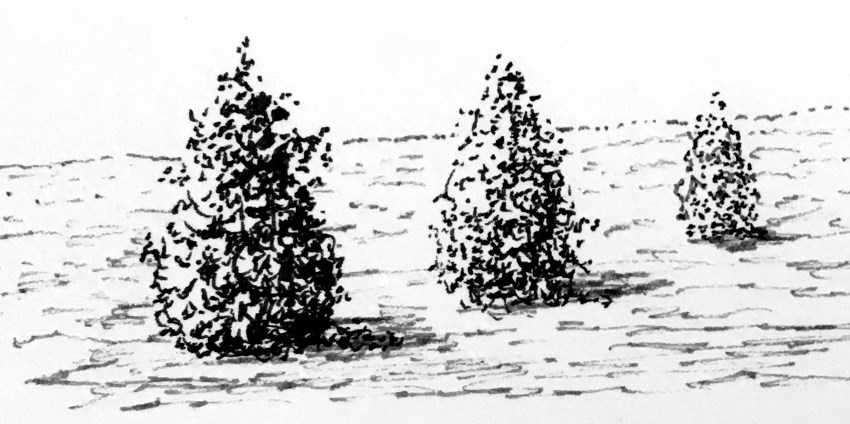 Horizon and basis
Horizon and basis
Pencil drawing example:
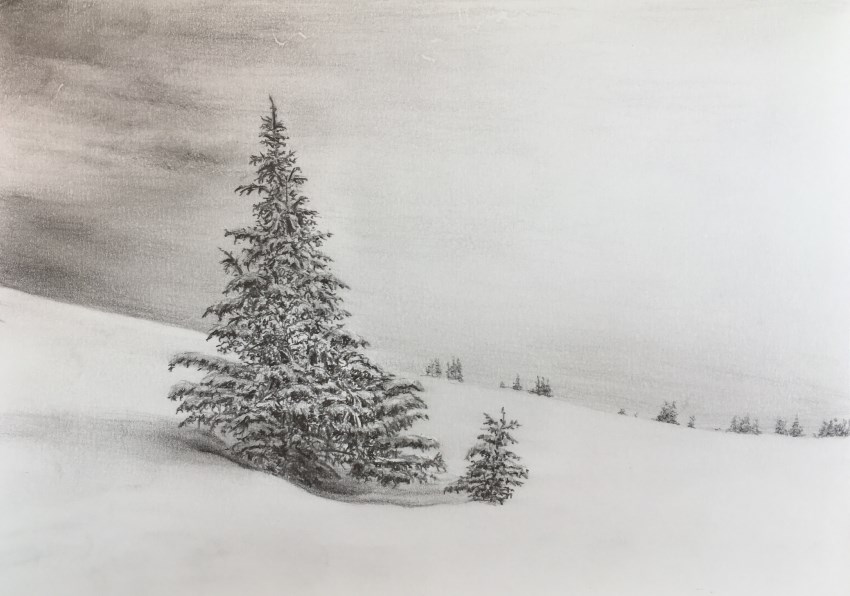 Snowy horizon & pine tree
Snowy horizon & pine tree
Think:
Your drawing surface is apartment! Y'all accept no depth, but width and tiptop.
Equally objects are closer to the horizon, they announced farther abroad.
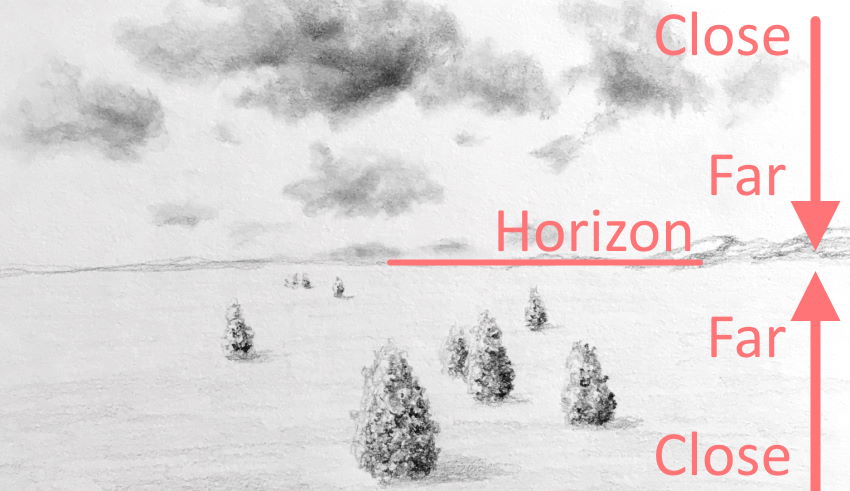 Summit every bit a measure of distance
Summit every bit a measure of distance
In the image higher up, trees that are higher on the drawing surface (toward the horizon) look further away.
Clouds that are lower on the drawing surface (toward the horizon) wait farther away.
For a list of equipment that I utilise for cartoon, visit my guide for pencil cartoon materials.
8. Perspective
By using linear perspective, it is possible to demonstrate depth in a realistic fashion.
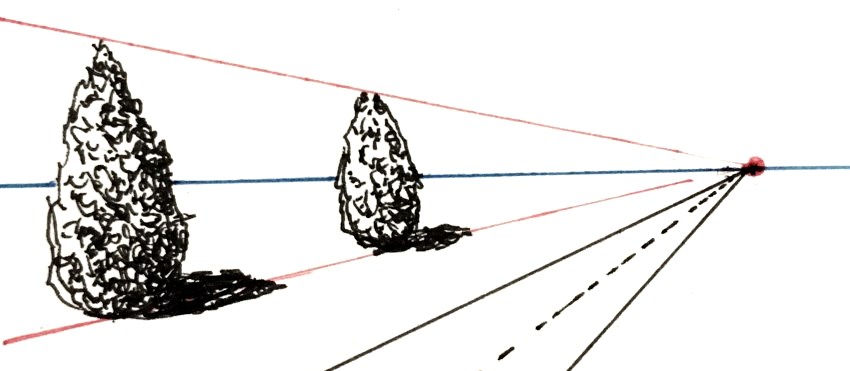 Linear perspective
Linear perspective
Example:
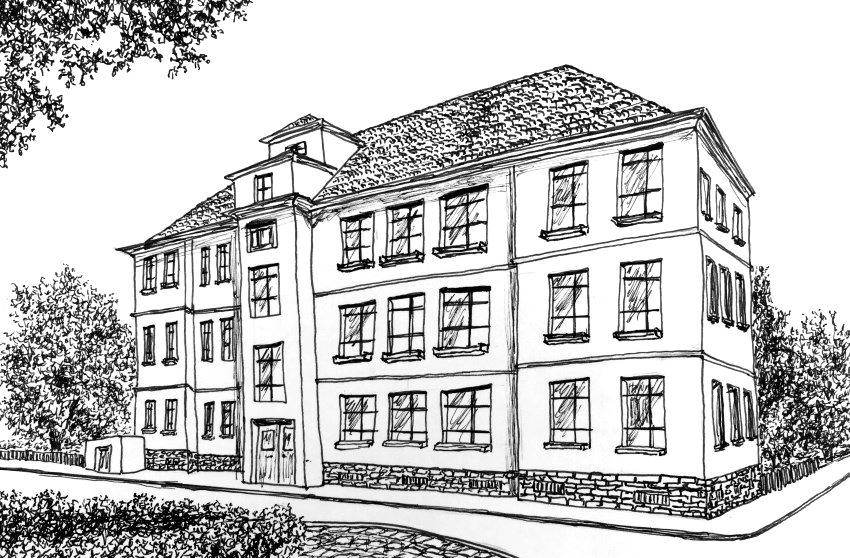 Business firm sketch in perspective
Business firm sketch in perspective
If you are new to linear perspective, read my linear perspective guide, it is an of import drawing fundamental.
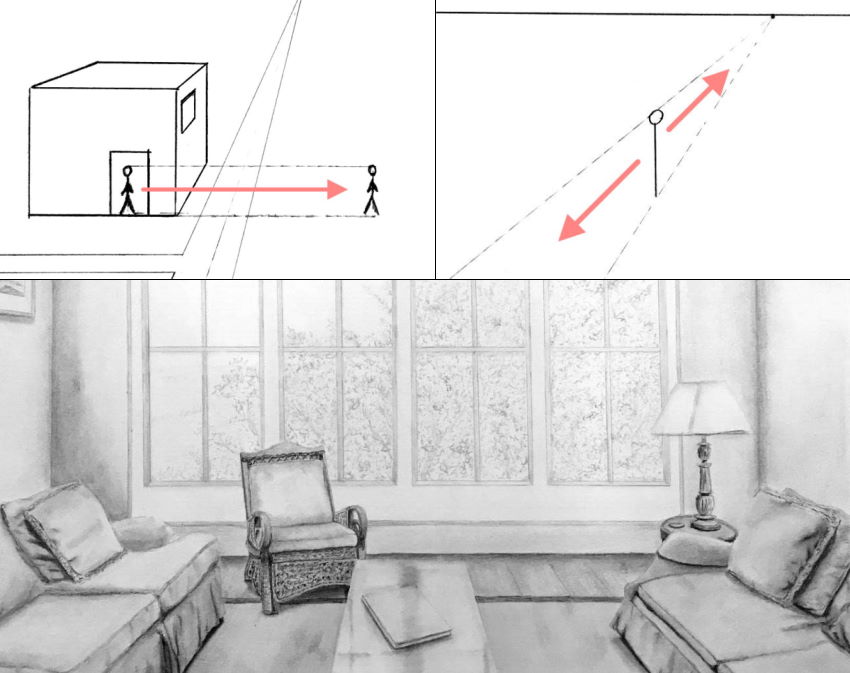
9. Foreshortening
Objects in front end of the viewer, such as buildings, trees, mountains, people, etc., look smaller as they are further away, just maintain the ratio between height and width. This means that there is no distortion.
On the other hand, when y'all change the object (or your) angle of sight, and the object is at present along the line of sight, information technology gets shorter in that direction.
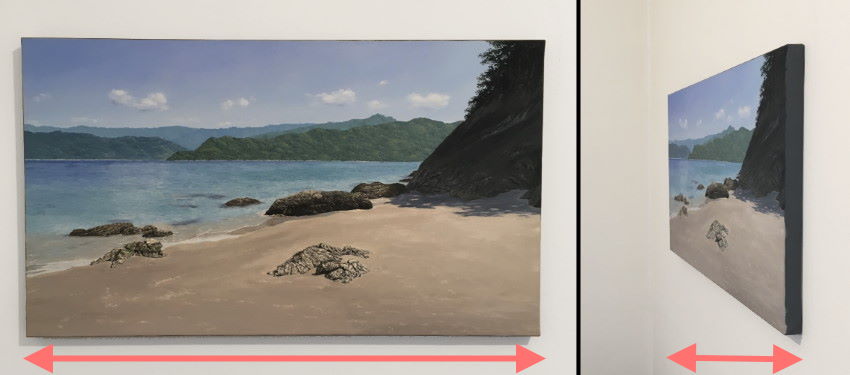 Foreshortened oil painting
Foreshortened oil painting
This distortion is due to the angle of sight. The more than an object is in your direction of sight, the more information technology is distorted (becomes much shorter in that direction).
For case, a lake that in reality can be round, in perspective becomes more elliptical equally the altitude betwixt it and the observer grows.
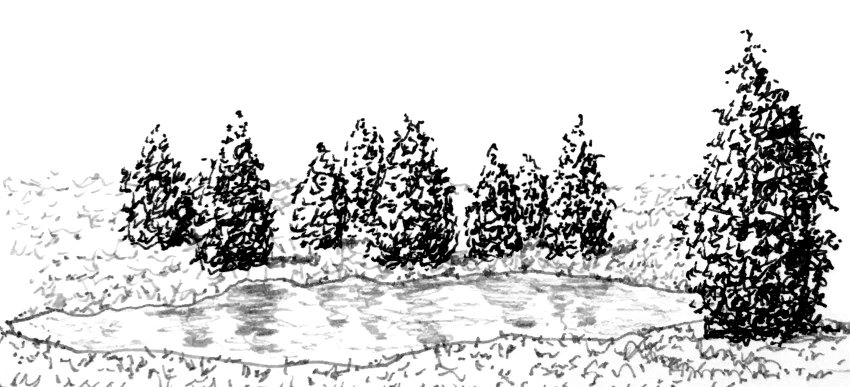 Foreshortened lake
Foreshortened lake
Note:
Cast shadows are bailiwick to foreshortening (unless they are in front of the observer).
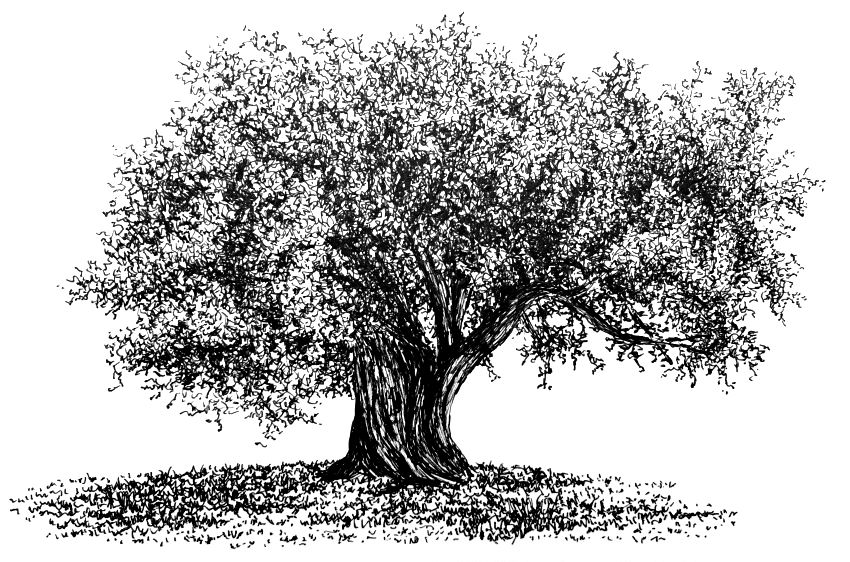 Cast shadow foreshortening
Cast shadow foreshortening
Understanding foreshortening is THE key reward of experienced artists, especially when drawing from imagination.
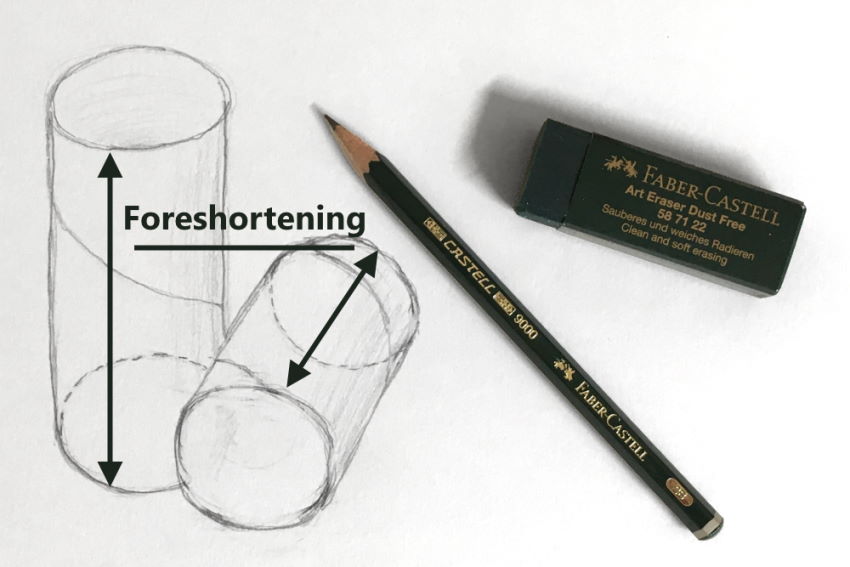 Foreshortened cylinder
Foreshortened cylinder
One time your sketch is correct, it is set for rendering.
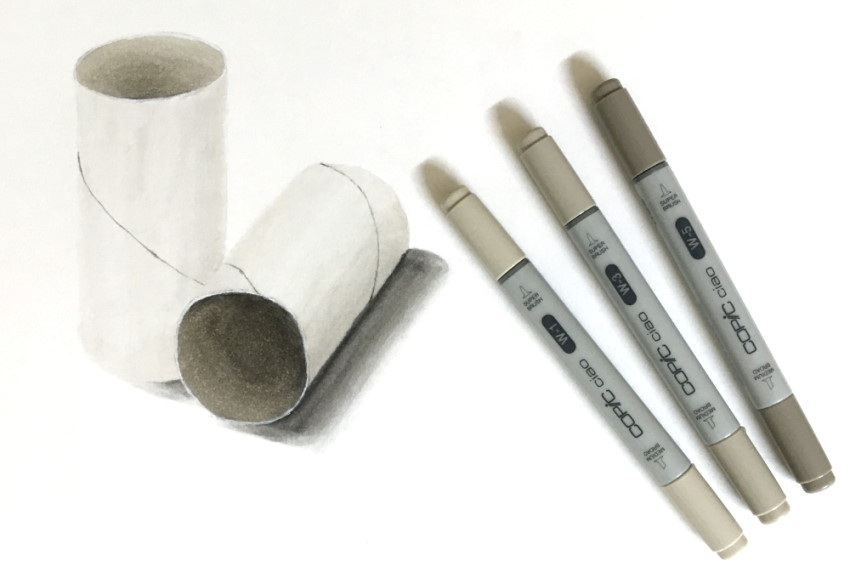 Coloring with markers
Coloring with markers
If you are new to foreshortening, visit my guide on cartoon from imagination (It is an advanced guide, just explained step-by-step).
10. Colors
According to the rules of atmospheric perspective, the further an object is, the more its color (hue) shifts toward the groundwork color, which is usually blue sky.
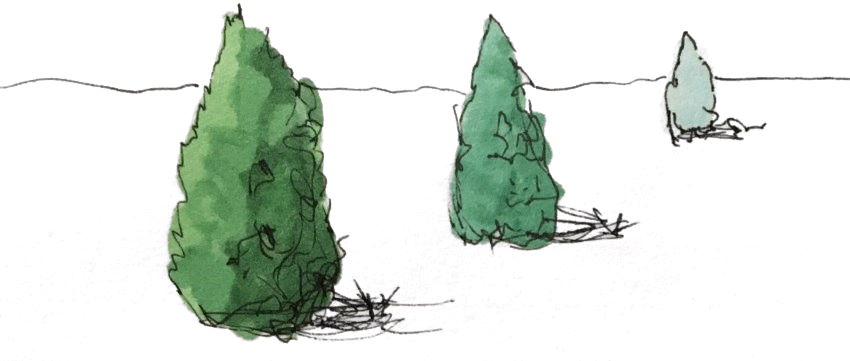 Green slightly shifts to blueish
Green slightly shifts to blueish
eleven. Saturation
The farther an object is, the less saturated its color is.
In other words, its colour is less rich, bright, or intense, therefore condign dull or neutral.
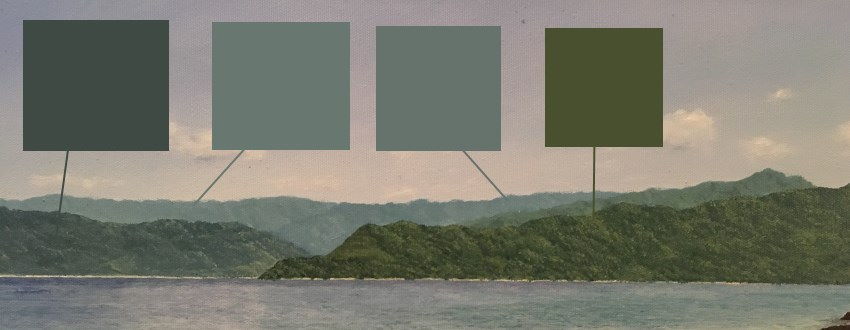 Far objects are irksome or grayish
Far objects are irksome or grayish
Example:
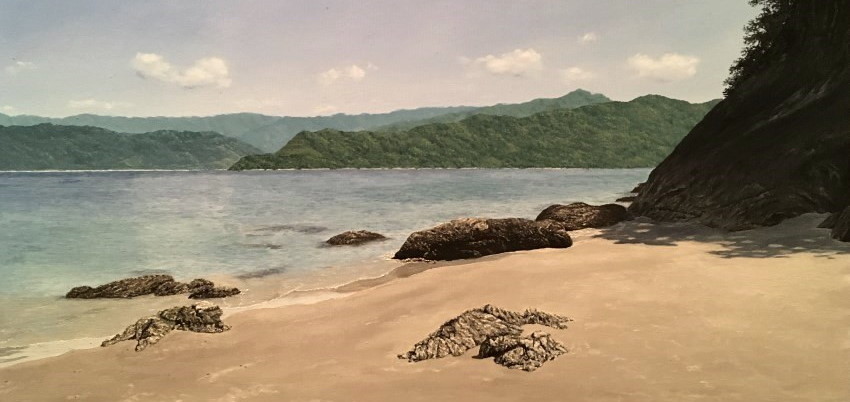 Seashore oil painting
Seashore oil painting
12. Temperature
Purple, blue and green are cool colors; they bring to listen the ocean, and other cool things.
Cherry-red, orange and yellow are warm colors; they bring to listen fire, or other warm things.
The farther away an object is, in that location are more than atmosphere particles betwixt it and the observer, i.e. the atmosphere color has a bigger consequence.
When the heaven is blue, the color of background objects shifts gradually toward a blue hue due to scattered low-cal, and therefore becomes cooler.
Foreground objects are warmer than the groundwork objects since there are less atmosphere particles between the observer and the foreground objects.
Contrary miracle may occur in sunrise or sunset.
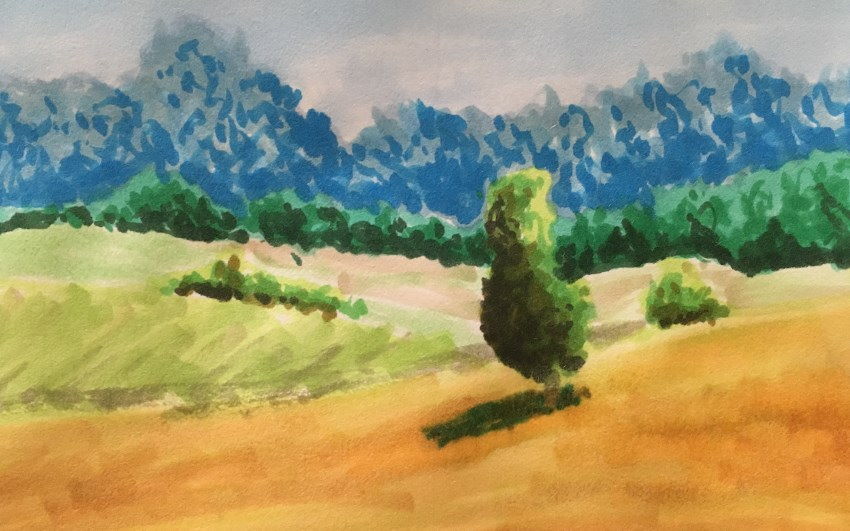 Temperature in landscape
Temperature in landscape
For a review of markers I employ for drawing, visit my markers guide.
13. Values
According to atmospheric perspective, farther objects accept higher brightness values, meaning their color is lighter.
 Further object is lighter
Further object is lighter
For monochromatic cartoon, similar pencil drawing, the same principle applies.
The key is to press harder with a drawing pencil for darker values, or to employ pencils with unlike effulgence values.
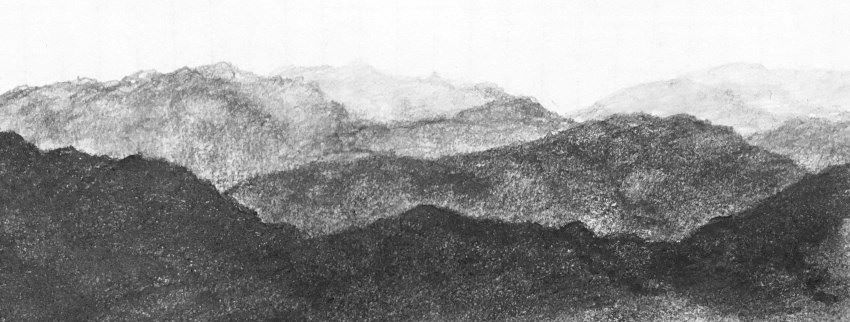 Foreground objects are darker
Foreground objects are darker
In add-on, transitions (gradient) in brightness values can be used to create the illusion of depth.
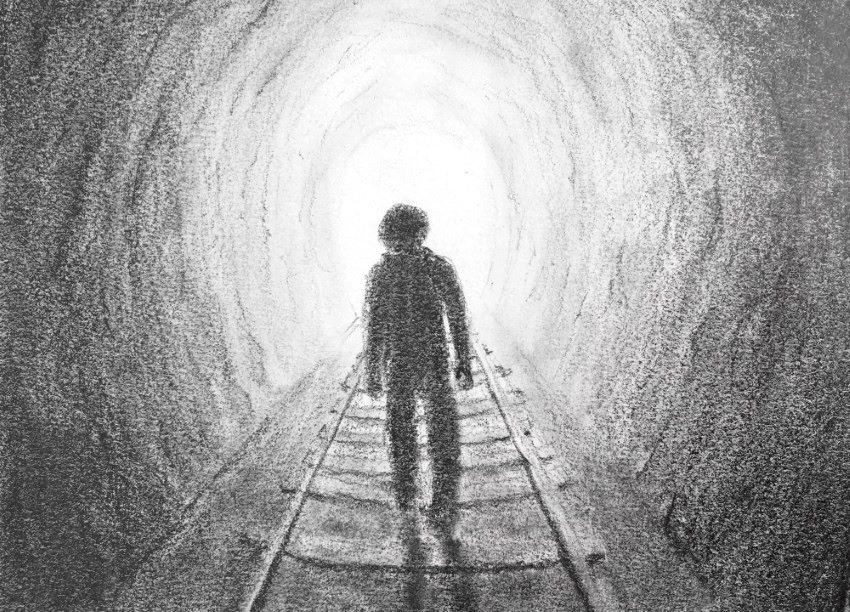 Transition from nighttime to light
Transition from nighttime to light
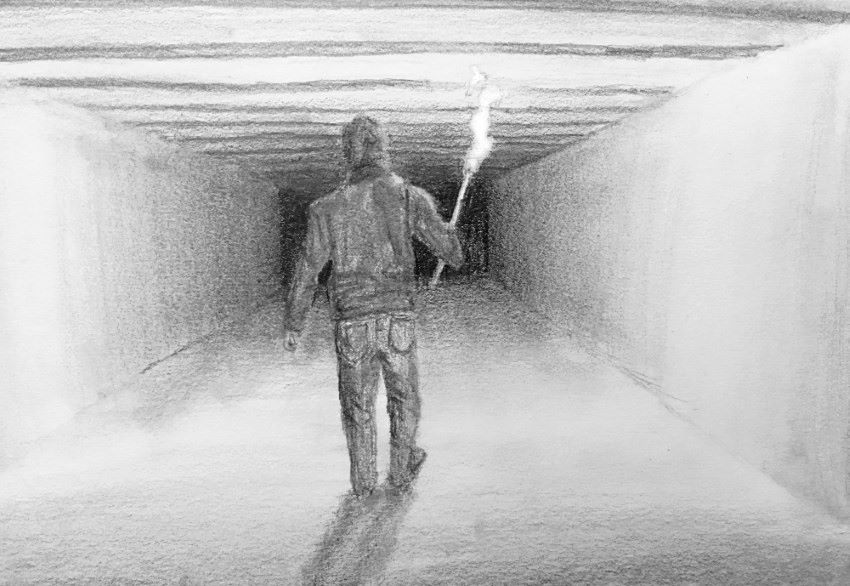 Transition from light to dark
Transition from light to dark
xiv. Cast Shadow
It is of import to draw or pigment bandage shadows when necessary, and to conform their direction to the reverse side of the light source.
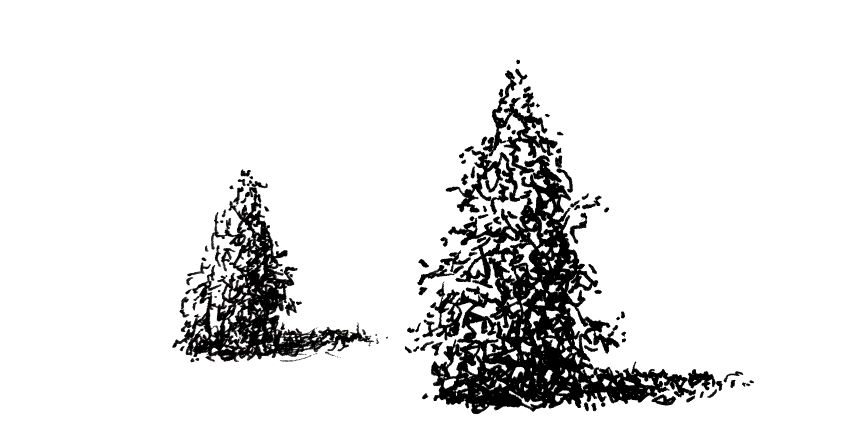 Cast shadow
Cast shadow
Case:
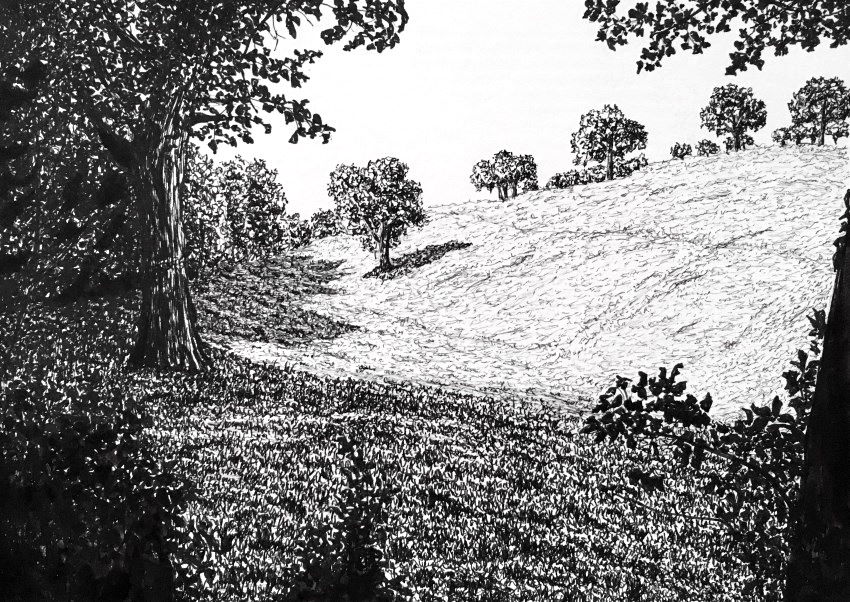 Landscape with pen & ink
Landscape with pen & ink
In order to learn how to compose a scene and render it, read my tutorial on composition drawing.
15. Brushstrokes & Marks
Some painting styles are done with a collection of single brushstrokes. For case, painting grass blades or leaves.
In these cases, utilise larger paintbrushes for foreground strokes.
You can practise the same with a technical pen.
Use a pen with a bigger nib size for bigger marks when cartoon foreground objects, and a smaller nib size for background objects.
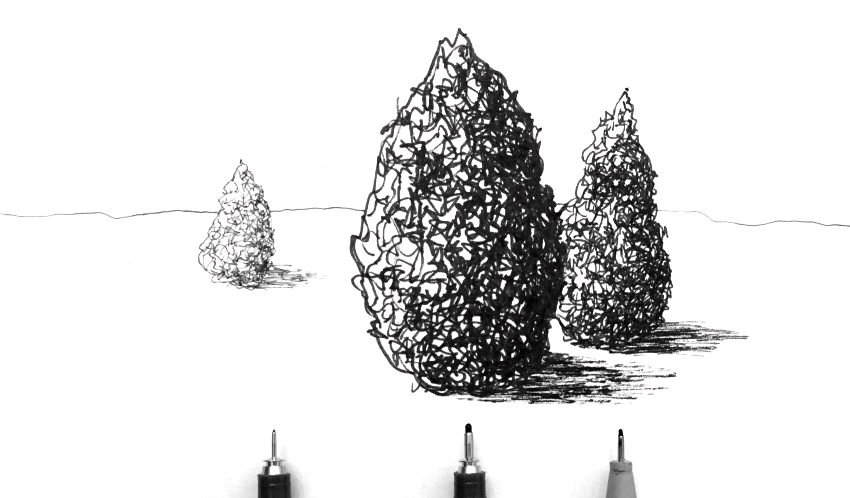 Different pecker sizes
Different pecker sizes
Example:
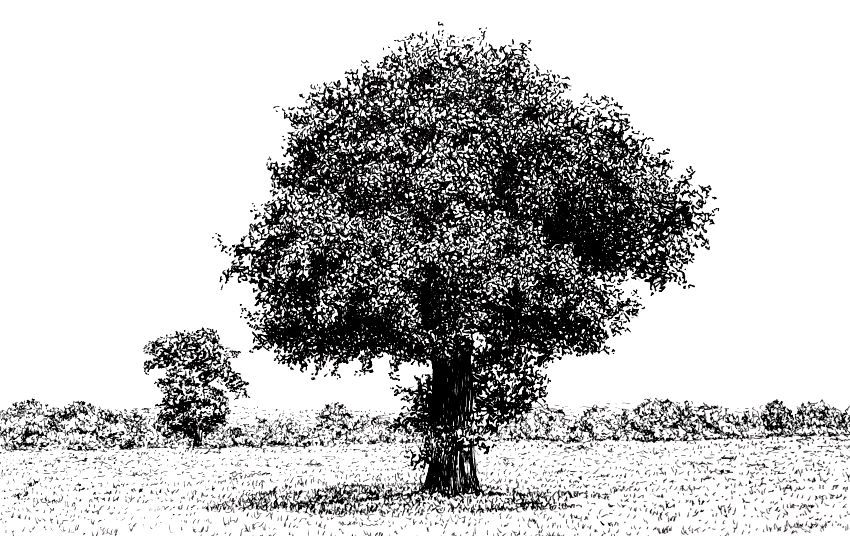
For an initial sketch, the direction of lines/marks or brushstrokes is important.
Aforementioned basic shape with different marks direction tells a different story:
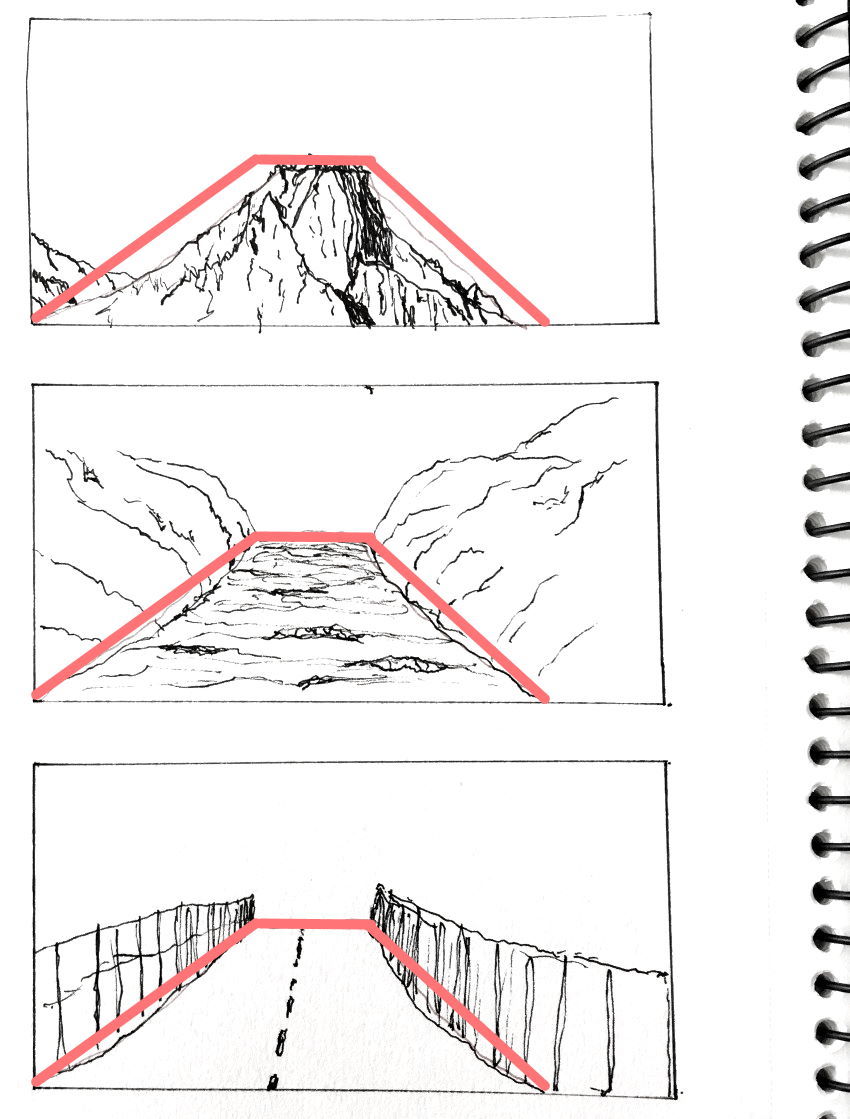 Marks direction for creating shapes and depth
Marks direction for creating shapes and depth
When planning a painting, the direction of marks play a major role:
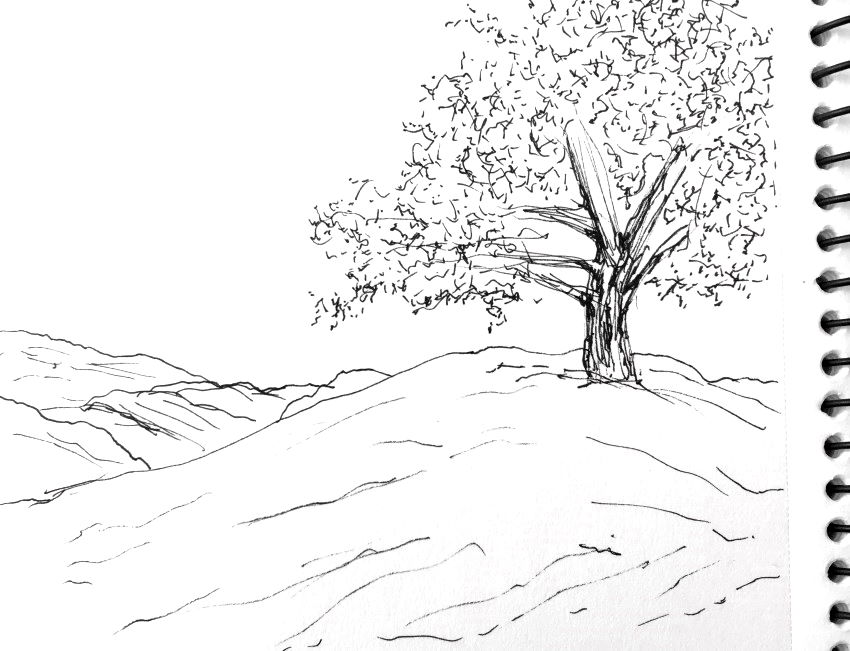 Marks as offset stride
Marks as offset stride
And, they are necessary when painting.
Case:
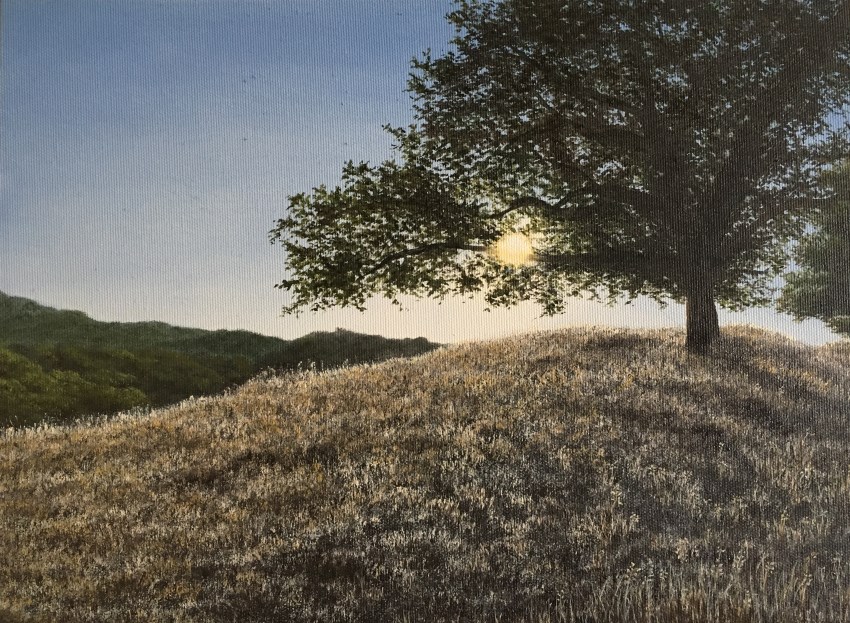 Tree in dusk oil painting
Tree in dusk oil painting
If you are new to oil painting, information technology is good to know the dissimilar types of paintbrushes for oil painting.
Summary
The key to create depth when drawing is the use of different methods to produce a three-dimensional look on a two-dimensional surface.
Simply put, there is no bodily depth in cartoon (or painting), simply an illusion of depth.
Colors:
When using colors, pay attention to color attributes such as hue, saturation, value, and temperature.
In a monochromatic drawing, correct effulgence values are crucial.
Landscape vs still life:
For landscape painting, it is benign to empathise linear and atmospheric perspective.
When painting a however life, employ methods like dissimilarity, overlap, and soft edges, to create depth.
Where to get next?
After understanding depth, you might want to visit my beginners guide to realistic pencil drawing.
And, learn virtually the viii key factors for painting realism.
If you lot similar drawing with pens, here is my blossom drawing guide.
![]()
![]()
Copyright © RanArtBlog.com. All Rights Reserved. | Sitemap
gulbransonbittly59.blogspot.com
Source: https://ranartblog.com/blogarticle20.html
0 Response to "images of 3d pencil drawings trees"
Post a Comment